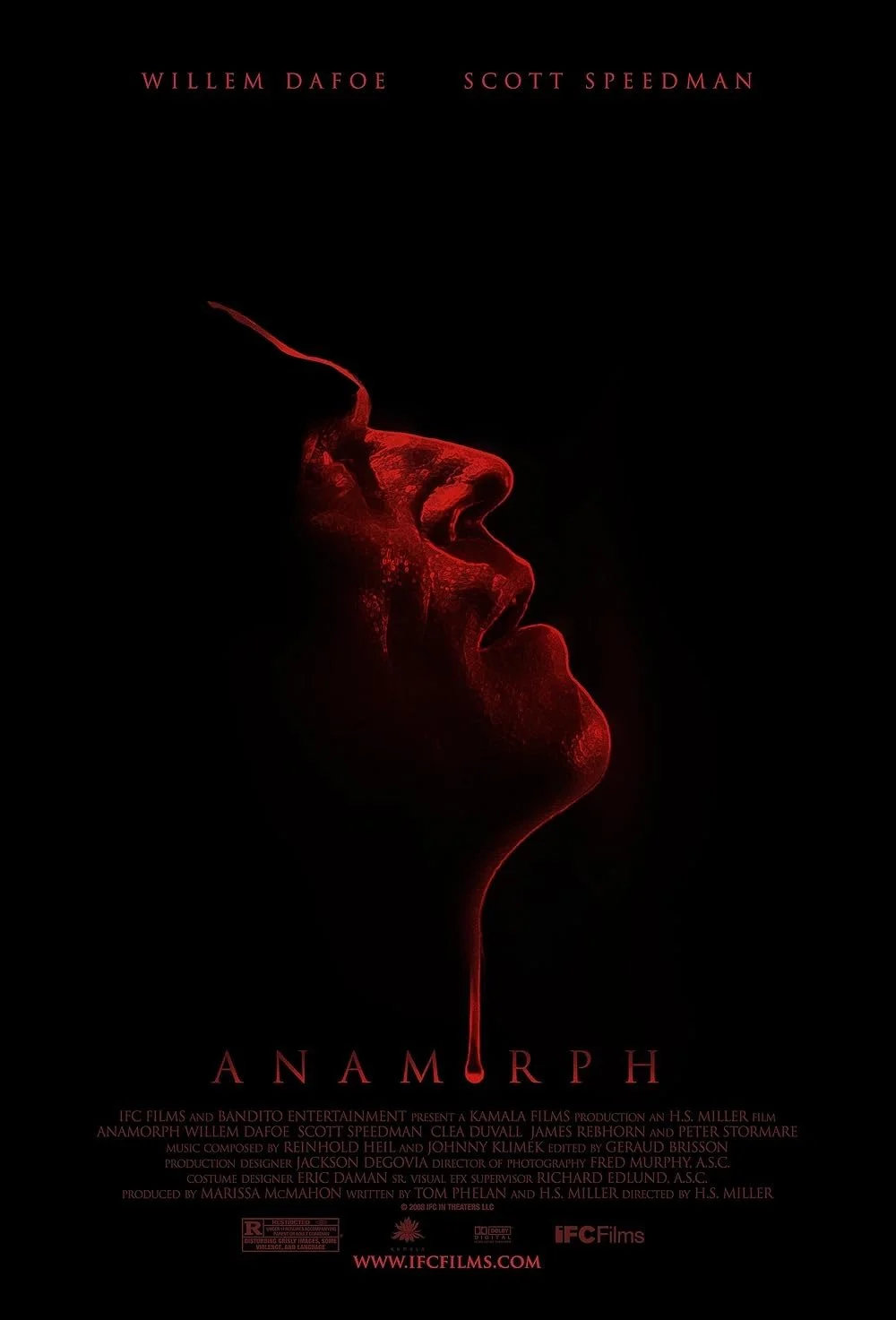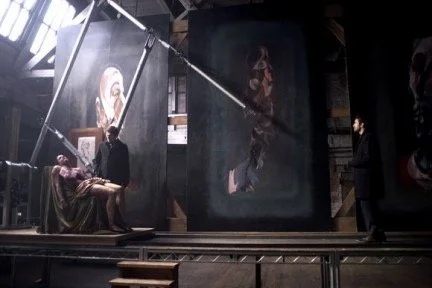Anamorph (2007) - Movie Review
What if I told you that IFC Films dumped a barrel of cash into a thriller based on the works of Francis Bacon?
What if I told you it was also one of the most underrated thrillers in my lifetime?
Let’s discuss.
Anamorph is a 2007 thriller brought to us by writer/director Henry Miller and writer Tom Phelan. I know a few of you will recognize those names, as their resumes in these roles are quite limited, but hear me out. Something that’s often overlooked in a director’s bag of skills is surrounding themselves with quality artists and technicians. The human instinct is to surround oneself with weaker talents to make oneself appear that much stronger. This film is the exact opposite of that human animus. The cast and crew comprise an all-star team of legends and rising stars. Which I will go into graphic detail in a moment.
But first.
The film focuses on Stan Aubray, an introverted detective who, despite his lauded success in closing one of the city’s most violent serial killer cases, has sunken deeper into himself and the bottle. The killer, Uncle Eddie, arranged his crime scenes like works of Renaissance art. He was clinical in his methods and execution, and Aubray was an avid student of art history, was the perfect foil, until a raid on a suspect’s home resulted in the man being killed in cold blood and the Police Department deciding that the man was indeed the killer, even though there was no evidence to confirm that fact. Stan never believed the official story, but when the killings stopped, he was forced to accept it. Five years later, he’s called to a crime scene staged in a meticulous recreation of a Camera Obscura, an artistic murder reminiscent of Uncle Eddy. As more and more bodies are found staged in elaborate scenes of artistic expression, Stan begins to see messages that all point back at him and the lie he was forced to accept. Is this a copycat killer or has Uncle Eddy returned from the grave? Find out in tonight’s feature presentation, Anamorph.
The intriguing premise is more than just a gimmick. If you’re a student of art history, you might see what I saw in the first crime scene and know from within the first fifteen minutes how the film will end. It didn’t ruin the movie. It actually made me more invested in seeing if my eyes had deceived me. Francis Bacon’s entire ideology challenges the standard perspective both in art and in deductive reasoning.
My wife and I both studied art history in our college careers, and I myself am a classically trained sculptor and painter who began college courses in art technique and theory at the age of 8 years old. So, we started this film with a leg up on people who did more productive things with their lives. I know most people won’t have had to study a lot of the things discussed in this film, but the filmmakers understood this too.
The dense subject matter is broken down to basics with deft writing and minimal exposition.
This film is sparing on script, but big on subtext. Many of the story’s biggest emotional anchors are left unsaid. Stan’s relationship with a prostitute, his distrust of other police officers, and the conspiracy surrounding the closure of the Uncle Eddie case are all left unspoken. Dafoe gives a powerful, non-verbal performance relaying emotions in place of words, and it’s something a lesser actor would have failed to convey.
You can’t watch this movie while looking at your cellphone.
And with a cast like this, why would you want to? We’re talking about some of the greatest character actors of all time filling an ensemble cast that could easily be a list of Lifetime Achievement Oscar winners. You’ve got the film legends like Willem Dafoe, Don Harvey, James Rebhorn, Amy Carlson, Paul Lazar, and the all-time great Peter Stormare rubbing elbows with young up-and-comers the likes of Scott Speedman, Paz De La Huerta, and Desiree Casado. That’s not even including the cameos by Mick Foley and Debbie Harry. Every single member of the cast, no matter how small their role, gives a standout performance, but even this homerun by the casting department can’t match up the to the scenes talent in play here.
The pairing of cinematographer Fred Murphy and editor Geraud Brisson is magic. Murphy is known for his gritty, unrelenting gaze behind the camera gaze seen in cult hits like 1999’s Stir of Echoes and 2002’s Auto Focus. (He was also the DP on the recently reviewed turd, 1989’s Night Game.) Brisson, on the other hand, has a keen hand at the editor’s table. His willingness to let shots linger, to allow the scene flow naturally as opposed to quick cuts, and instead focus on clever transitioning of scenes works hand in hand with Murphy and Miller’s work to produce a fever dream of flesh and blood.
This film is a work of art, timeless in its art design, practical effects, and overall aesthetic. I love that this film was shot in the early internet age, but could easily be set in the 1940s. Cell phones are sparingly used, and I don’t recall even seeing a computer on screen. Detectives work with newsclipping, investigation files, and Polaroids.
Anamorph (2007)
All Rights Kamala Films
Multiple scenes are dressed and staged to appear like classic works of art.
Francis Bacon is the obvious inspiration of the film, as his visceral and unrelenting works depicting the evil animus at the center of the human condition are the obsession of the killer. He’s an underrated genius whose focus on the macabre diminished his relevance in his time, but makes him all the more famous now.
Much like Bacon’s work, this film is incredibly dark and doesn’t shy away from showing you the absolute brutality of the killer. The juxtaposition between the butchery and the fine artistry of the killer’s creations really lends a subconscious sense of danger.
The Screaming Pope (1949)
Francis Bacon
This film often mocks the audience by giving them the answer to the mystery in frame, hidden in plain sight, over and over.
I’ve seen so many negative reviews of the film claiming that it’s pretentious and bloated with high-brow themes and dialogue. I think most of those reviewers missed the point of the filmmaker’s exercise here. The killer is pretentious, and much like he mocks the protagonist, he’s also mocking you, the viewer.
The essence of this film, much like Ari Aster’s masterpiece, 2019’s Midsommar, is that if the character would just take a step back from their personal bias and consider the issues from a different perspective, there is no mystery. The answer is plain and simple, right in front of your eyes.
This film is derided by the general public, but it really should be lauded, not just for its cast, but for the overall artistry of the filmmaking involved. From the pitch-perfect score, the amazing practical effects, and incredible lighting.
This film is Candyman meets Se7en.
Check this one out.
It’s streaming free on Amazon Prime Video as of this writing.




